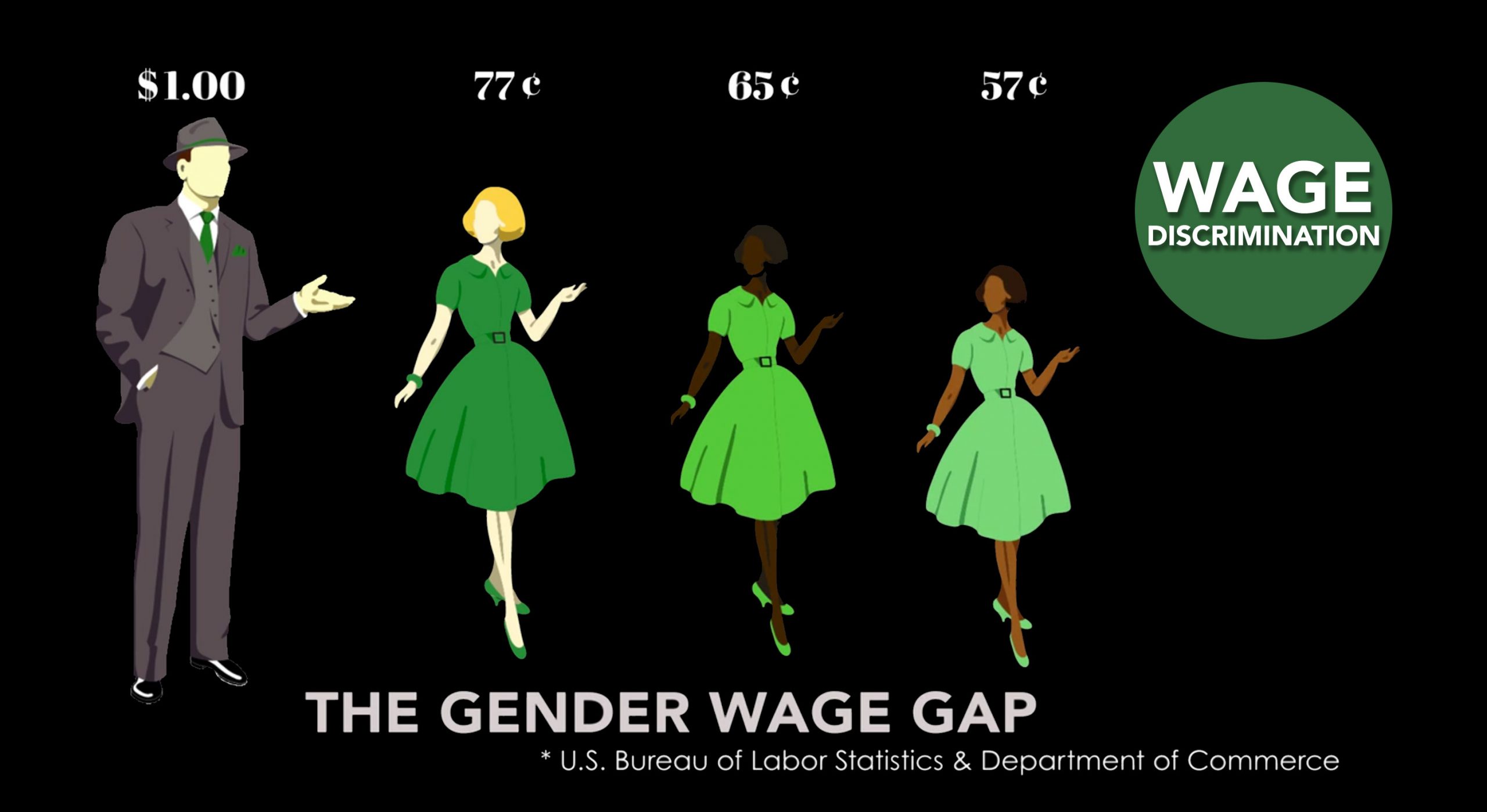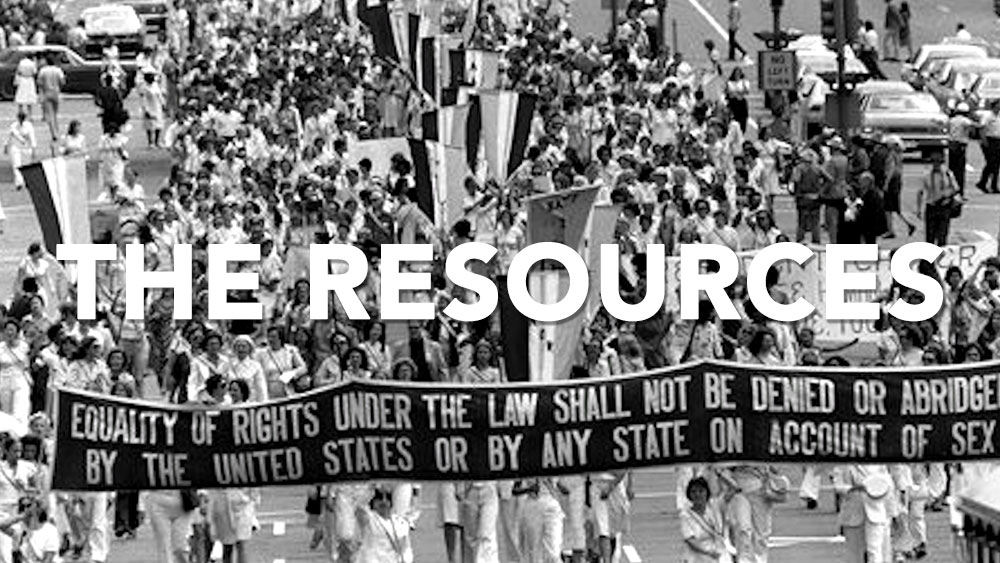


Women make up nearly half of the U.S. workforce. Full participants, they’ve reached equal and some cases higher, levels than their male counterparts, and yet, as the Women’s institute of Policy research makes plain: the gap between men and women’s income remains. Compared to white men, white women working full time, based on median annual full-time earnings, earn 78 cents to every dollar a man earns. African American women make 64 cents, and Latina, 54 cents. Depending on the year, that pay may rise a couple of pennies, but not because women wages have increased but because men’s have stagnated or declined.
Some argue that women choose professions that traditionally pay less. Yet even in many female-dominated professions, guess what— men make more. Nearly 90 percent of nurses are women, yet they are paid, on average, 10 percent less than male nurses. Female secretaries, earn 84.5 cents of a white male secretary’s dollar. In fact women earn less than men, on average, in 99.6 percent of all occupations.
By comparison, women around the globe are paid better. The United States ranks 65th in wage equality for similar work, according to a World Economic Forum study of 142 nations, including Canada, United Arab Emirates, Egypt, Iceland, Japan, Botswana and Honduras.
While we do have laws against wage discrimination, they have loopholes or may not be enforced. In 2009, in response to a large gap between men and women’s compensation in Wisconsin, which ranked 36th out of all states in terms of workplace gender parity, the legislature passed the Equal Pay Enforcement Act. It allowed victims of workplace – not only women, but also employees discriminated because of their age, race, disability, sexual orientation and religion – to seek damages in state court. Just three years later governor Scott Walker repealed the law. A state senator, agreeing with the governor, said, “You could argue money is more important to men.”
How long before women and men receive equal pay? According to the Institute for Women’s Policy Research, if things continue to change at the current pace, we’ll be waiting until 2059. And that’s the optimistic outlook. The World Economic Forum in a report about the Global Gender Gap calculated it would take 118 years.



THE FACTS
Percentage of women in the U.S. workforce: 49.4
Number of women employed in the U.S: 69,901,000
Bureau of Labor (Table B-5, p. 34)
Bureau of Labor (Household survey Table A-1)
National Journal
Percentage of minimum wage workers who are women: 62.8 %
Bureau of Labor (Table 10)
Number of women in Fortune 500 CEOs in 1995: 0
in 2014: 24
Pew Research Center
Fortune
Number of women among the 200 highest paid CEOs: 13
Equilar Executive Compensation Survey/ New York Times
Number of hours each year that women do unpaid labor raising children and taking care of sick and elderly: 110, 000,000
The Shriver Report
For Love and Money: Care Provision in the United States edited by Nancy Folbre, Russell Sage Foundation (2012) p. 98
Percentage that women earned compared to white men, based on median annual full-time earnings:
White women: 78
African American women: 64
Latina: 54
American Association of University Women
infoplease.com
Harvard Business Review
The percentage of major occupations for which women earn less than men: 99.6
Bloomberg
U.S. Department of Labor
Fortune
Percentage of nurses that are men: 10
Cents on the dollar that female nurses get paid versus male nurses: 90
American Medical Journal
Institute for Women’s Policy Research
Cents on the dollar that waitresses get paid versus waiters: 89
Institute for Women’s Policy Research
Cents on the dollar that female secretaries get paid versus male secretaries: 84.5
Institute for Women’s Policy Research
Money CNN
Cents on the dollar that female lawyers get paid versus male lawyers: 83
Bureau of Labor
Cents on the dollar that female mangers get paid versus male manager: 81
Institute for Women’s Policy Research
: The Gender WAGE GAP:2014
Cents on the dollar that female doctors get paid versus male doctors: 63
Fortune
Cents on the dollar that women in sales jobs get paid versus men in sales jobs: 62
Institute for Women’s Policy Research
Cents on the dollar that female CEOS get paid versus male CEOS: 80
Institute for Women’s Policy Research
Think Progress
The year that women will achieve equal pay if changes in women’s wages continue at current rate: 2059
Institute for Women’s Policy Research
Infoplease.com
Number of women in the U.S.: 161,000,000
Percentage women make up in U.S. population: 51%
U.S. Census Bureau
Number of women in U.S. Senate: 20 out of 100 seats (20 percent)
Number of women in House: 84 of 435 seats (19.3 percent)
Rutgers University
The year women will have an equal share of seats in Congress if elected to office at the current rate: 2117
Fortune
Institute of Women’s Policy Research
Percentage of state and federal judges who are women: 33
Americas Quarterly
Percentage of college presidents who are women: 26
American Council of Education
Percentage military commissioned officers who are women: 16
Percentage of military generals or admirals who are women: 7
Pew Research Center
CNN
Percentage of U.S. mayors who are women: 17
U.S. Conference of Mayors
Percentage of CEOS who are women: 5.2.
Washington Post
Catalyst
Percentage of pastors: 12
Faith Communities Today Survey
Number of Wal-Mart employees in the U.S: 1,400,000
Wal-Mart Fact Sheet
Gross Sales in 2014 for Wal-Mart: $473 000,000,000
Wal-Mart 2014 Annual Report
Average hourly wage of Wal-Mart employee in 2014: $8.48
Wall Street Journal
Average dollar amount that female employees at Wal-Mart earn less than male employees annually: $1,100
Statistical Analysis Of Gender Patterns In Wal-Mart Workforce
Percentage of Wal-Mart’s hourly workforce that is female: Two thirds
Percentage of managerial workforce that’s female: One third
CNN
Statistical Analysis of Gender Patterns in Wal-Mart Workforce
Percentage of women directors, writers, producers, executive producers, editors, and cinematographers working on the top 250 (domestic) grossing films in 1998: 17
in 2014: 17
Center for the Study of Women in Television and Film, San Diego State University
Percentage of female lead protagonists in the top 100 grossing films of 2014: 12
Percentage of speaking roles for women in the top 100 grossing films of 2014: 30
Center for the Study of Women in Television and Film, San Diego State University
THE EXPERTS
Terry O’Neill
President – National Organization for Women
Maria Shriver
Journalist and Philanthropist
Sarah Slamen
Texas Activist
Jessica Neuwirth
President – ERA Coalition
Former Policy Advisor – Amnesty International
Dr. Martha Burk
Co-Founder – Center for Advancement of Public Policy
Lamar Hill AKA L.A. Sunshine
Musician/rapper/author
Carolyn Maloney
U.S. Congresswoman (NY)
Jennifer Reisch
Legal Director – Equal Rights Advocates
On team of attorneys taking on case of Betty Dukes
Betty Dukes
First Female to file a lawsuit against Walmart for gender discrimination
Largest civil rights employment case in history
Gloria Steinem
Journalist and Activist
Presidential Medal of Freedom Recipient
Linda Wharton
Professor of Law and Political Science
Former Managing Attorney – Women’s Law Project
Kevin Noble Maillard
Professor of Law – Syracuse University
Eleanor Smeal
Co-Founder and President – Feminist Majority
Ellen Chesler
Senior Fellow – Roosevelt Institute
Lisa Maatz
Lead Policy Advisor – American Association of University Women
Lisa Hintz
Wall Street Analyst
Mark Benioff
CEO of Salesforce
Lori Sokol PhD.
President – Sokol Media, Inc.
Carolyn Maloney
U.S. Congresswoman (NY)
Soraya Chemaly
Journalist
Diana Egozcue
President – Virginia NOW
Roberta Francis
ERA Task Force Co-Chair
National Council of Women’s Organizations
ERA
Lea Delaria
Actress – Orange is the New Black
ERA
Beth Adubato
Professor of Criminal Justice – New York Institute of Technology
ERA
THE RESOURCES
Equal Rights Advocates
equalrights.org
(800) 839-4372
U.S. Equal Employment Opportunity Commission (EEOC)
eeoc.gov
(800) 669-4000
American Association of University Women
aauw.org
(800) 326-2289
Workplace Fairness
workplacefairness.org
(240) 772-1205
Institute for Women’s Policy Research
iwpr.org
(202)785-5100
